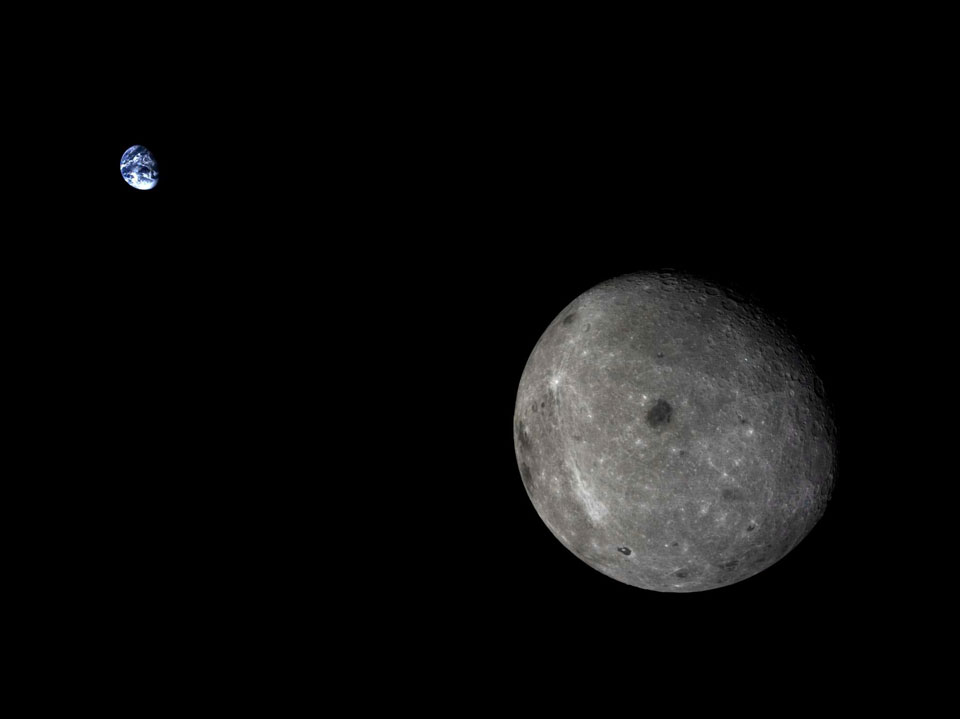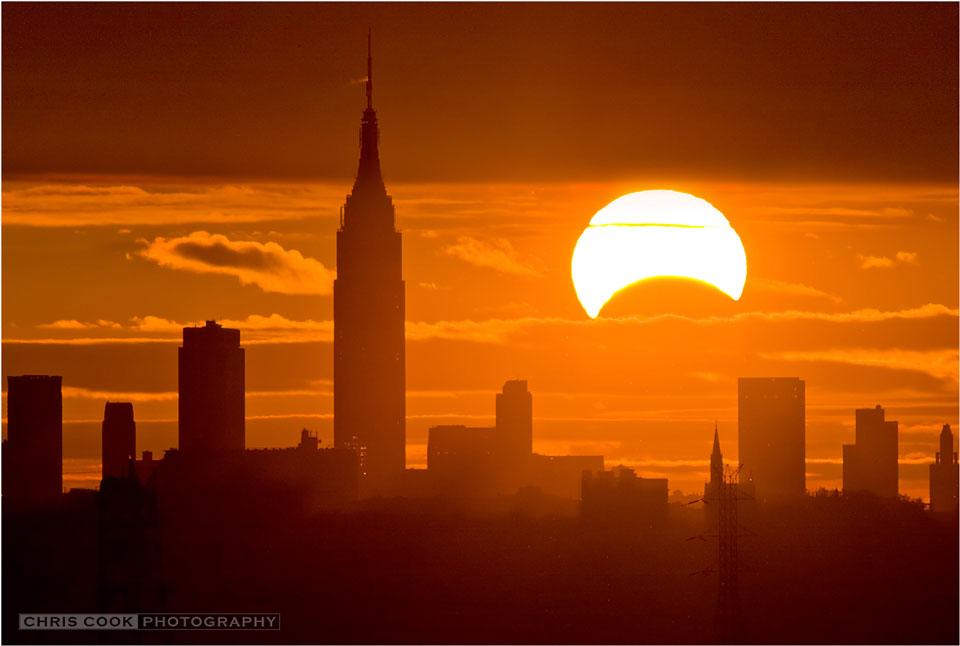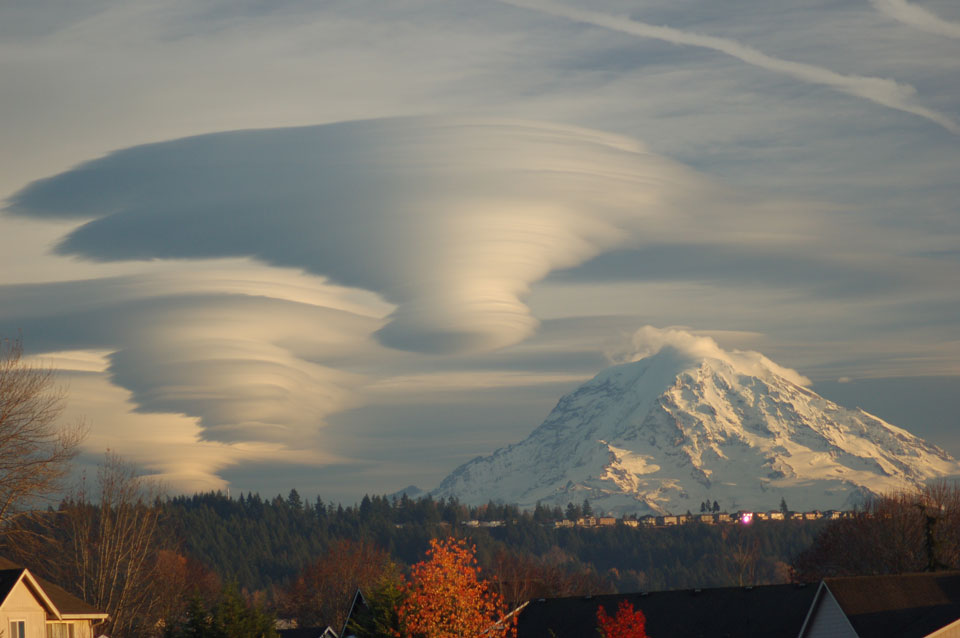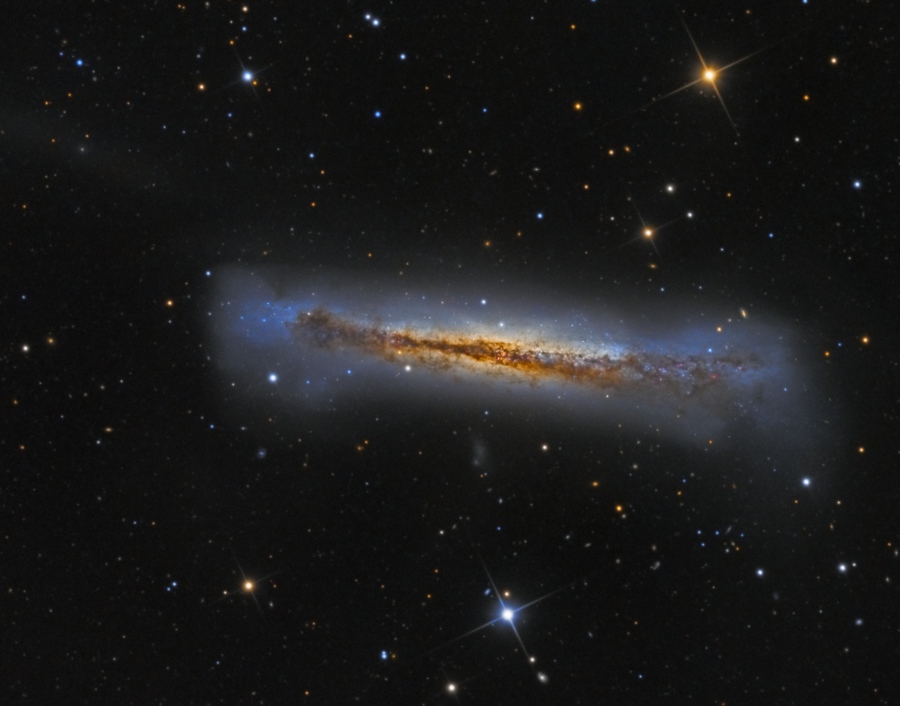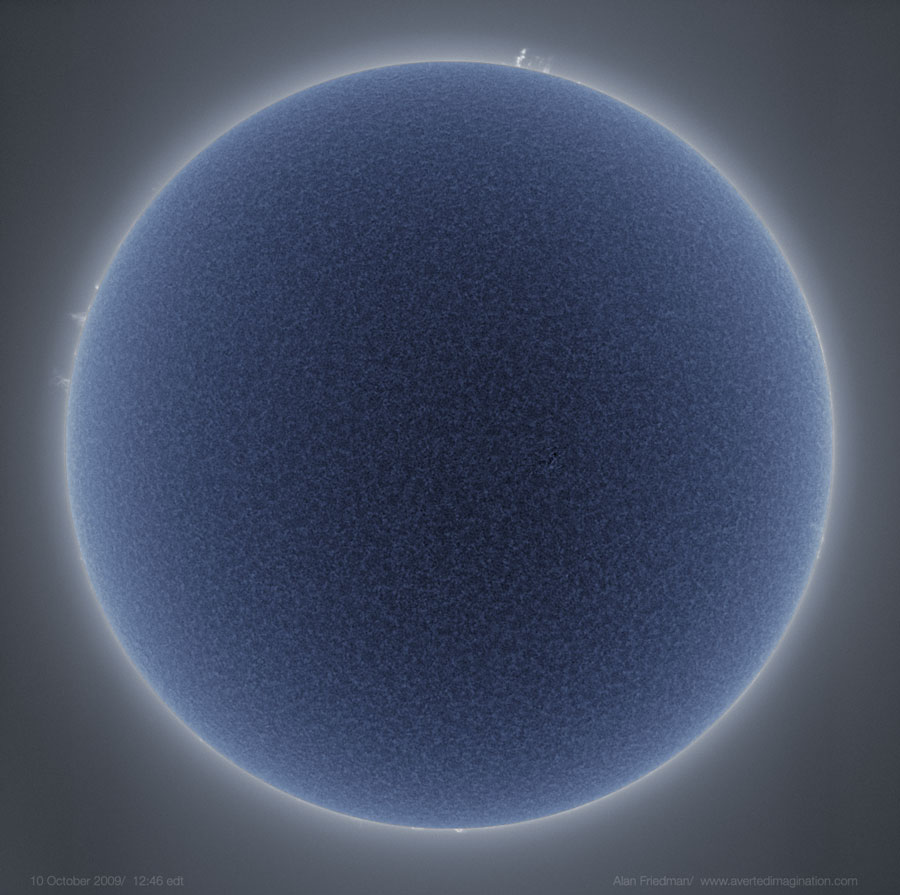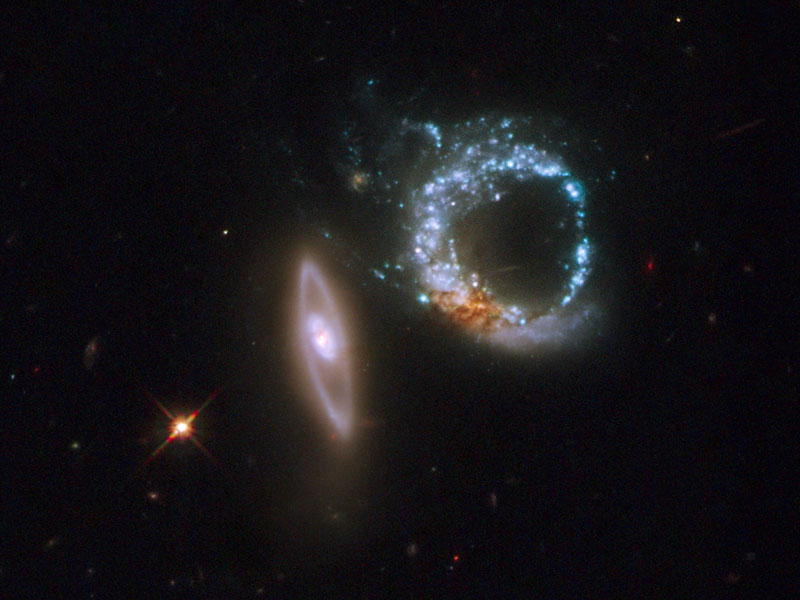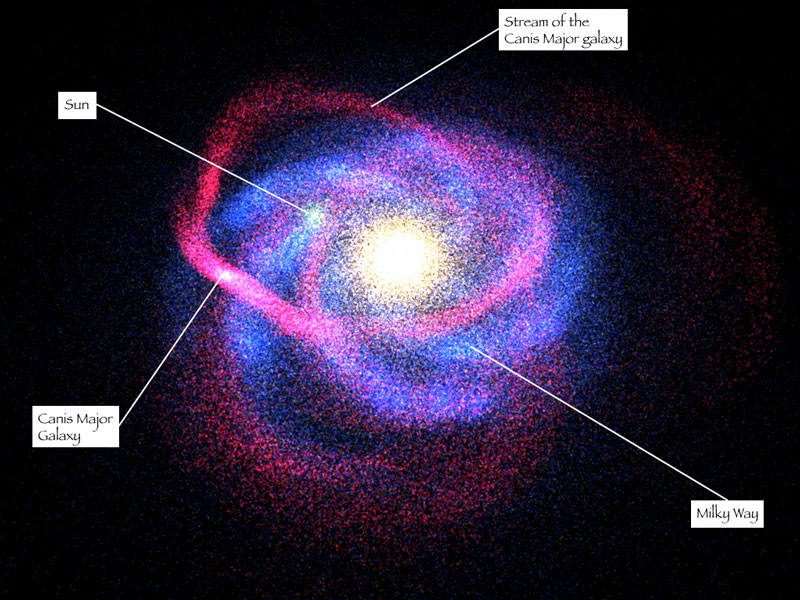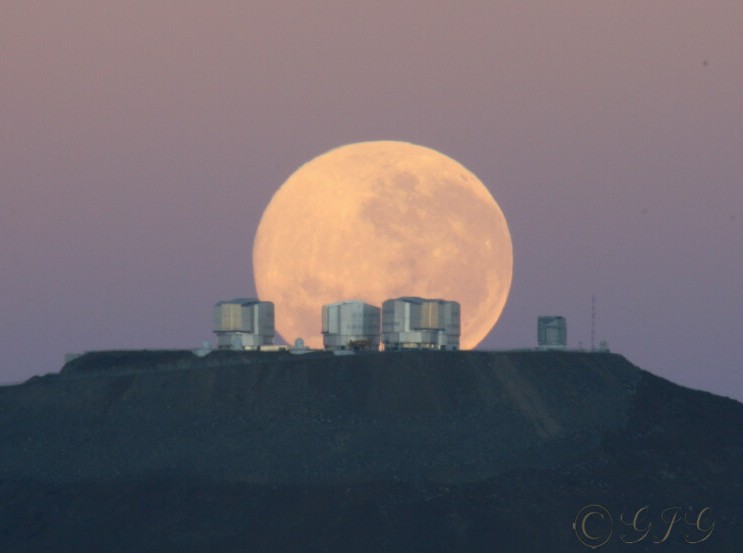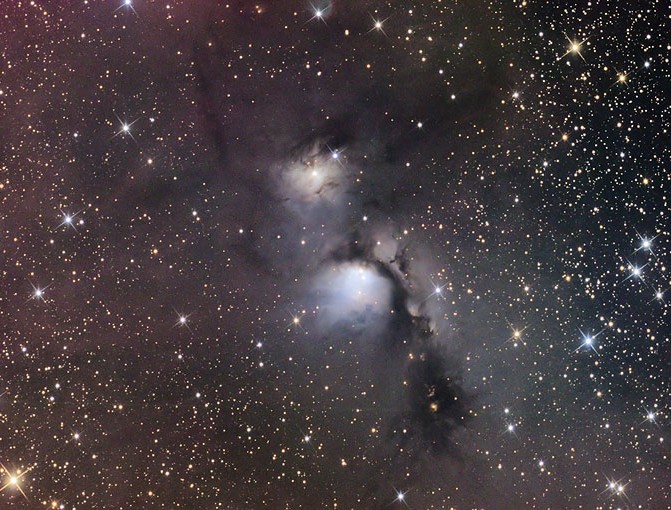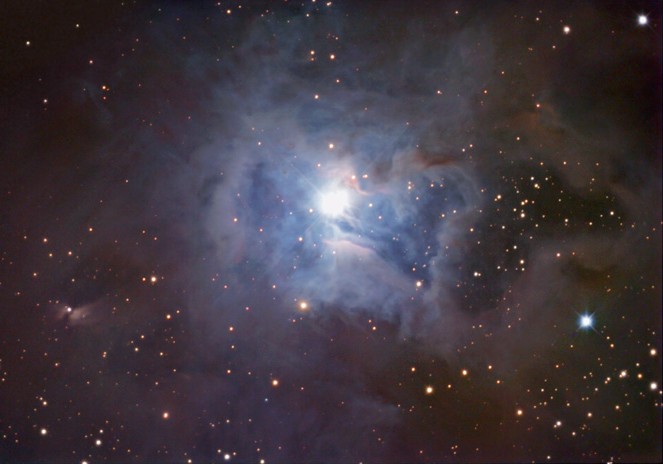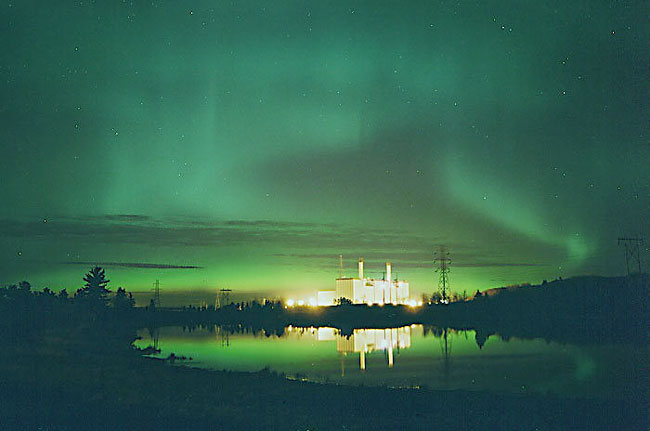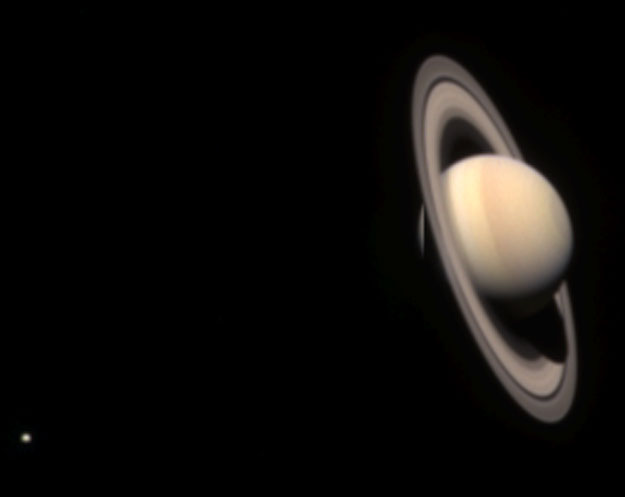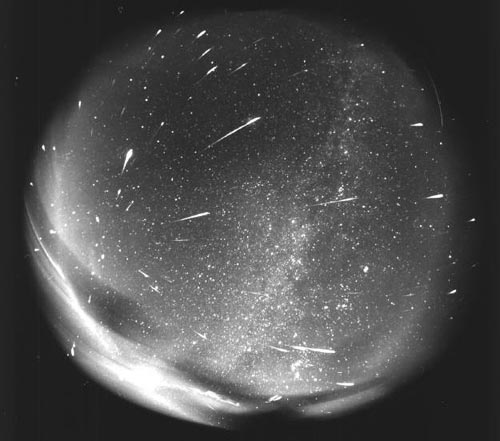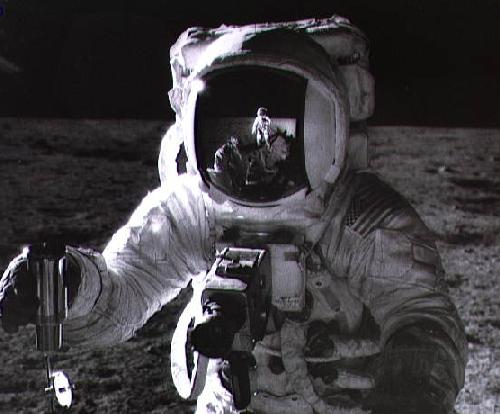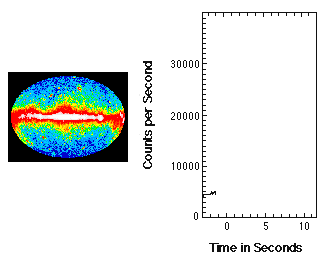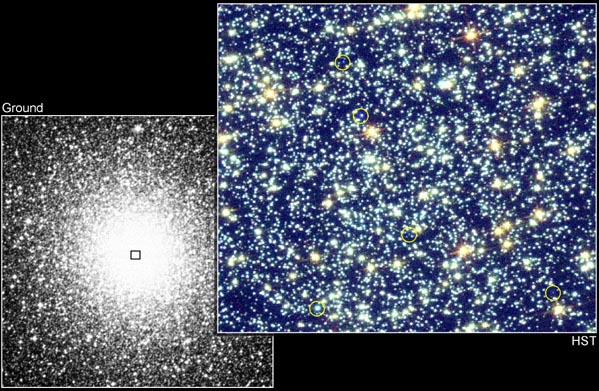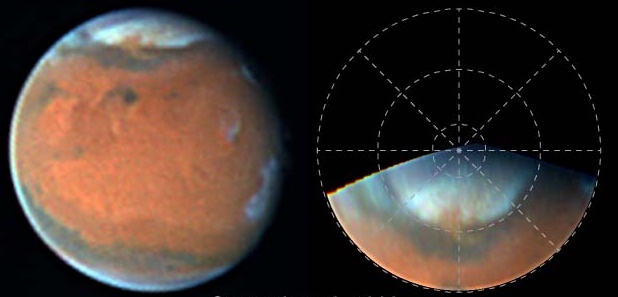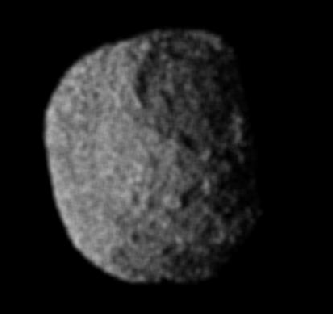| << Previous | Index | Next >> |
2014 Described at times as a big blue marble, from some vantage points Earth looks more like a small blue marble. Such was the case in this iconic image of the Earth and Moon system taken by the Chang'e 5-T1 mission last week. The Moon appears larger than the Earth because it was much closer to the spacecraft's camera. Displaying much of a surface usually hidden from Earth, the Moon appears dark and gray when compared to the more reflective and colorful planet that it orbits. The robotic Chang'e 5-T1 spacecraft, predominantly on an engineering test mission, rounded the Moon last Tuesday returned to Earth on Friday.
2013 A sunrise over New York City rarely looks like this. Yesterday, however, the Sun rose partly eclipsed by the Moon as seen from much of the eastern North American and northern South America. Simultaneously, much of Africa, already well into daytime, saw the eclipse from beginning to end. The eclipse was unusual in that it was a hybrid -- parts of the Earth saw the Moon as too angularly small to cover the whole Sun, and so at maximum coverage left the Sun surrounded by a ring a fire, while other parts of the Earth saw the Moon as large enough to cover the entire Sun, and so at maximum coverage witnessed a total solar eclipse. Slight changes in the angular size of the Moon as seen from the Earth's surface are caused by the non-flatness of the Earth and the ellipticity of the Moon's orbit. Pictured above, the famous Empire State Building in New York City is seen to the left of the partially eclipsed Sun, adorned with scenic clouds. The next solar eclipse visible from New York City -- a very slight eclipse -- will occur during the sunset of 2014 October 23.
2012 Are those UFOs near that mountain? No -- they are multilayered lenticular clouds. Moist air forced to flow upward around mountain tops can create lenticular clouds. Water droplets condense from moist air cooled below the dew point, and clouds are opaque groups of water droplets. Waves in the air that would normally be seen horizontally can then be seen vertically, by the different levels where clouds form. On some days the city of Seattle, Washington, USA, is treated to an unusual sky show when lenticular clouds form near Mt. Rainier, a large mountain that looms just under 100 kilometers southeast of the city. This image of a spectacular cluster of lenticular clouds was taken in 2008 December.
2011 Sharp telescopic views of magnificent edge-on spiral galaxy NGC 3628 show a puffy galactic disk divided by dark dust lanes. The tantalizing scene puts many astronomers in mind of its popular moniker, The Hamburger Galaxy. About 100,000 light-years across and 35 million light-years away in the constellation Leo, NGC 3628 shares its neighborhood in the local Universe with two other large spirals, a grouping otherwise known as the Leo Triplet. Gravitational interactions with its cosmic neighbors are likely responsible for the extended flare and warp of this spiral's disk, populated by the galaxy's young blue star clusters and tell tale pinkish star forming regions. Also a result of past close encounters, a faint tidal tail of material is just visible extending upward and left in this deep galaxy portrait.
2010 Constellations of lights sprawl across this night scene, but they don't belong in the skies of planet Earth. Instead, the view looks down from the International Space Station as it passed over the United States along the northern Gulf Coast on October 29. A Russian Soyuz spacecraft is docked in the foreground. Behind its extended solar panels, some 360 kilometers below, are the recognizable city lights of New Orleans. Looking east along the coast to the top of the frame finds Mobile, Alabama while Houston city lights stand out to the west, toward the bottom. North (left) of New Orleans, a line of lights tracing central US highway I55 connects to Jackson, Mississippi and Memphis, Tennessee. Of course, the lights follow the population centers, but not everyone lives on planet Earth all the time these days. November 2nd marked the first decade of continuous human presence in space on board the International Space Station.
2009 Our Sun may look like all soft and fluffy, but it's not. Our Sun is an extremely large ball of bubbling hot gas, mostly hydrogen gas. The above picture of our Sun was taken last month in a specific red color of light emitted by hydrogen gas called Hydrogen-alpha and then color inverted to appear blue. In this light, details of the Sun's chromosphere are particularly visible, highlighting numerous thin tubes of magnetically-confined hot gas known as spicules rising from the Sun like bristles from a shag carpet. Our Sun glows because it is hot, but it is not on fire. Fire is the rapid acquisition of oxygen, and there is very little oxygen on the Sun. The energy source of our Sun is the nuclear fusion of hydrogen into helium deep within its core. No sunspots or large active regions were visible on the Sun this day, although some solar prominences are visible around the edges.
2008 How could a galaxy become shaped like a ring? Even more strange: how could two? The rim of the blue galaxy pictured on the right shows an immense ring-like structure 30,000 light years in diameter composed of newly formed, extremely bright, massive stars. This blue galaxy is part of the interacting galaxy system known as Arp 147, and shows a ring because it has recently collided with the other galaxy in the frame, the red galaxy on the left. Unusually, even this red galaxy shows a ring like band, although it is seen nearly edge-on. When galaxies collide, they pass through each other -- their individual stars rarely come into contact. Clouds of interstellar gas and dust become condensed, causing a wave of star formation to move out from the impact point like a ripple across the surface of a pond. The above image was taken last week by NASA's Hubble Space Telescope to demonstrate the ability of its Wide Field Planetary Camera 2 after some recent technical difficulties.
2007 What is the closest galaxy to the Milky Way? The new answer to this old question is the Canis Major dwarf galaxy. For many years astronomers thought the Large Magellan Cloud (LMC) was closest, but its title was supplanted in 1994 by the Sagittarius dwarf galaxy. Recent measurements indicate that the Canis Major dwarf is only 42,000 light years from the Galactic center, about three quarters of the distance to the Sagittarius dwarf and a quarter of the distance to the LMC. The discovery was made in data from the 2MASS-sky survey, where infrared light allows a better view through our optically opaque Galactic plane. The labeled illustration above shows the location of the newly discovered Canis Major dwarf and its associated tidal stream of material in relation to our Milky Way Galaxy. The Canis Major dwarf and other satellite galaxies are slowly being gravitationally ripped apart as they travel around and through our Galaxy.
2006 Just before the rising Sun fully illuminated the 2,635 meter summit of Cerro Paranal in northern Chile, Gordon Gillet captured this stunning moonset. In the telephoto picture, a nearly full October Moon is silhouetting the impressive array of telescopes at ESO's Paranal Observatory. Most prominent from left to right are the four enclosures of the 8.2 meter very large telescopes christened Antu, Kueyen, and Yepun almost hiding Melipal. Fans of Paranal will also note the VLT Survey Telescope at the far right and the small, white auxilliary telescope domes. Antu, Kueyen, Yepun, and Melipal are names taken from the Mapuche language. Fittingly they translate to Sun, Moon, Evening Star, and Southern Cross.
2005 Interstellar dust clouds and bright nebulae abound in the fertile constellation of Orion. One of the brightest, M78, is just below center in this sharp widefield view, covering an area north of Orion's belt. At a distance of about 1,500 light-years, the bluish nebula itself is about 5 light-years across. Its blue tint is due to dust preferentially reflecting the blue light of hot, young stars in the region. Dark dust lanes and other nebulae can easily be traced through this gorgeous skyscape that also includes the remarkable McNeil's Nebula -- a newly recognized nebula associated with the formation of a sun-like star.
2004 Like delicate cosmic petals, these clouds of interstellar dust and gas have blossomed 1,300 light-years away in the fertile star fields of the constellation Cepheus. Sometimes called the Iris Nebula and dutifully cataloged as NGC 7023, this is not the only nebula in the sky to evoke the imagery of flowers. Still, the beautiful digital image shows off the Iris Nebula's range of colors and symmetries in impressive detail. Within the Iris, dusty nebular material surrounds a massive, hot, young star in its formative years. Central filaments of cosmic dust glow with a reddish photoluminesence as some dust grains effectively convert the star's invisible ultraviolet radiation to visible red light. Yet the dominant color of the nebula is blue, characteristic of dust grains reflecting starlight. Dark, obscuring clouds of dust and cold molecular gas are also present and can lead the eye to see other convoluted and fantastic shapes. Infrared observations indicate that this nebula may contain complex carbon molecules known as PAHs. As shown here, the Iris Nebula is about 6 light-years across.
2003 Northern and southern locales saw many a beautiful aurora over the last week, as particles from several large solar flares impacted the Earth. Many reported unusually red auroras, although colors across the spectrum were also seen. Power grids and orbiting satellites braced for the onslaught, but little lasting damage was reported. Pictured above, the Clover Bar Power Plant was photographed from the banks of the North Saskatchewan River in Edmonton, Alberta, Canada. A small pond in the foreground reflects predominantly green aurora light far in the distance. Two days ago, again unexpectedly, another large solar flare occurred from sunspot group 10486, the site of other recent major flares. This unusually active solar region is now rotating to the far side of the Sun.
2002 Cassini, a robot spacecraft launched in 1997 by NASA, is close enough now to resolve many rings and moons of its destination planet: Saturn. The spacecraft has closed to about two Earth-Sun separations from the ringed giant. Last month, Cassini snapped several images during an engineering test. These images have been combined into the contrast-enhanced color composite pictured above. Saturn's rings and cloud-tops are visible on the far right, while Titan, its largest moon, is visible as the speck on the lower left. When arriving at Saturn in July 2004, the Cassini orbiter will begin to circle and study the Saturnian system. Several months later, a probe named Huygens will separate and attempt to land on the surface of Titan.
2001 Is Leo leaking? Leo, the famous sky constellation visible on the left of the above all-sky photograph, appears to be the source of all the meteors seen in 1998's Leonids Meteor Shower. That Leonids point back to Leo is not a surprise - it is the reason that this November meteor shower is called the Leonids. Sand-sized debris expelled from Comet Tempel-Tuttle follows a well-defined orbit about our Sun, and the part of the orbit that approaches Earth is superposed in front of the constellation Leo. Therefore, when Earth crosses this orbit, the radiant point of falling debris appears in Leo. Over 150 meteors can be seen in the above four-hour effort. The intensity of the Leonid Meteor Shower in 2001 is uncertain but may approach one per second for some locations on November 18.
2000 Is it art? In November of 1969, Apollo 12 astronaut-photographer Charles "Pete" Conrad recorded this masterpiece while documenting colleague Alan Bean's lunar soil collection activities on the Oceanus Procellarum. The image is dramatic and stark. Bean is faceless. The harsh environment of the Moon's Ocean of Storms is echoed in his helmet's perfectly composed reflection of Conrad and the lunar horizon. Works of photojournalists originally intent on recording the human condition on planet Earth, such as Lewis W. Hine's images from New York City in the early 20th century, or Margaret Bourke-White's magazine photography are widely regarded as art. Similarly many documentary astronomy and space images can be appreciated for their artistic and esthetic appeal.
1999 Using graphics and data from NASA's Compton Gamma Ray Observatory, this animation illustrates one of the most exciting mysteries of modern astrophysics, gamma-ray bursts. Incredibly gamma-ray bursts, sudden flashes of radiation with over 100,000 times the energy of visible light photons, occur several times a day. They typically last from fractions of a second to many minutes and appear from random directions, unexpectedly triggering space-based gamma-ray instruments. At left a burst suddenly appears, flickers and fades in a false-color gamma-ray all-sky map, briefly overwhelming all other sources of celestial gamma-rays. The graph at right shows the corresponding response of an orbiting gamma-ray detector as its counting rate suddenly climbs and falls recording the passage of the mysterious burst. Originating far across the Universe, gamma-ray bursts are now known to be the most powerful explosions since the big bang and may yet prove to be useful tools for exploring the distant cosmos. Future space and ground-based observatories will also work to discover the nature of the bursters and the source of their extreme energy.
1998
1997 This old dog is doing new tricks. On the left is ancient globular cluster 47 Tucanae which formed many billions of years ago. On the right is a closeup of its dense stellar center by the Hubble Space Telescope, released last week. Circled are mysterious stars called "blue stragglers." Stars as bright and blue as blue stragglers live short lives, much shorter than the age of the host globular cluster itself. But this contradicts evidence that globular cluster stars formed all at once. Although this problem has been known for almost 50 years, a mass and spin rate for a blue straggler was first published last Saturday. This new information indicates that BSS 19 was rejuvenated by two orbiting stars slowly coalescing , and not by a dramatic collision.
1996 As spring comes to the northern latitudes of Mars, increased solar heating brings warmth and a change in the weather. The winds produced by the large temperature differences between the receding polar ice and the warming regions to the south may cause dust storms - like the one visible in the above Hubble Space Telescope images made in September this year. On the left, north is up and the Martian polar cap is seen at the top with dark regions along its southern border. The dust storm, about 600 miles wide, is visible against the white polar ice as a salmon colored notch. The image on the right presents the data showing the dust storm on a map grid centered on the north pole. Mars is famous for planet wide dust storms but studies of more localized weather patterns are difficult without high resolution images like those provided by the Hubble. As NASA prepares future missions to Mars, detailed studies of Martian weather patterns become increasingly important.
1995 Proteus is the second largest moon of Neptune behind the mysterious Triton. Proteus was discovered only in 1982 by the Voyager 2 spacecraft. This is unusual since Neptune has a smaller moon - Nereid - which was discovered 33 years earlier from Earth. The reason Proteus was not discovered sooner is that its surface is very dark and it orbits much closer to Neptune. Proteus has an odd box-like shape and were it even slightly more massive, its own gravity would cause it to reform itself into a sphere.
| << Previous | Index | Next >> |
